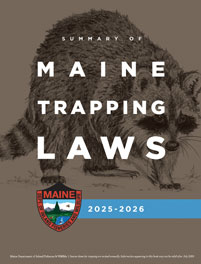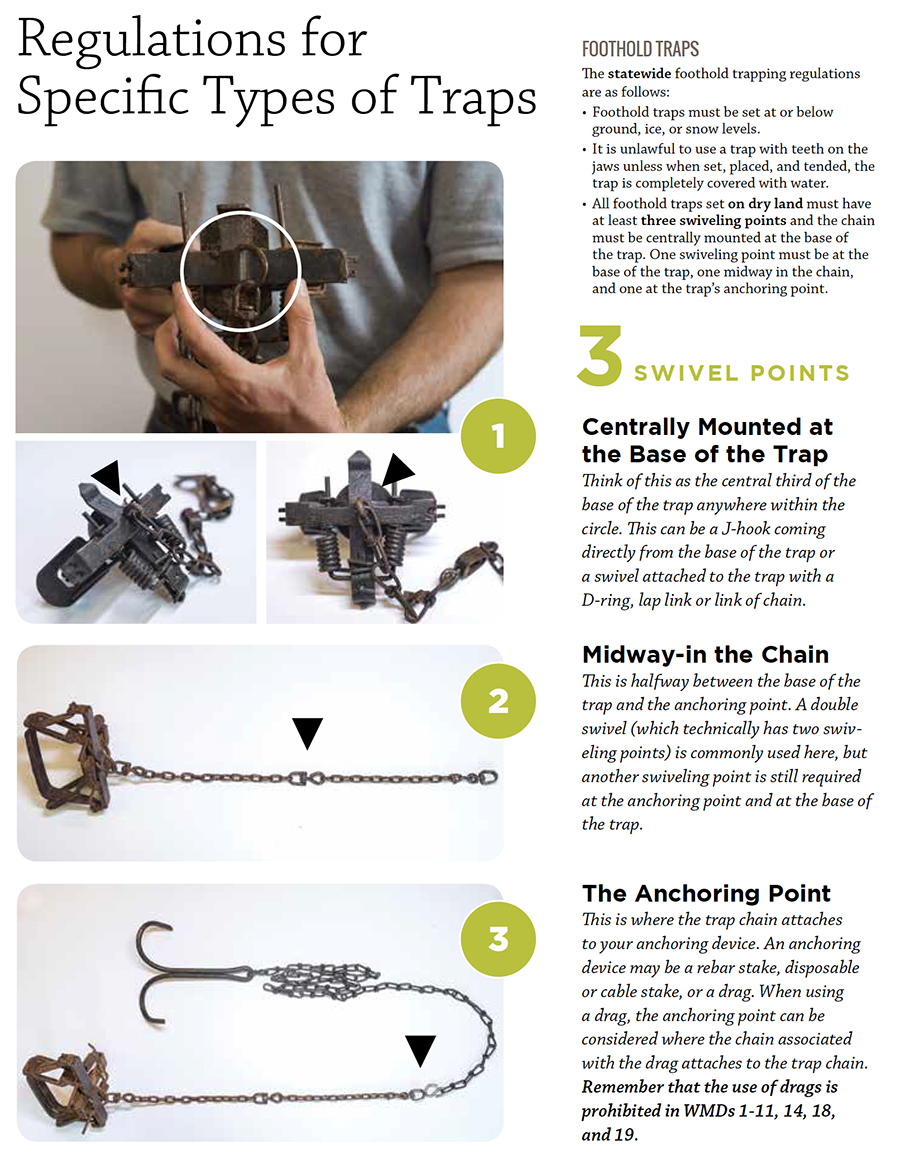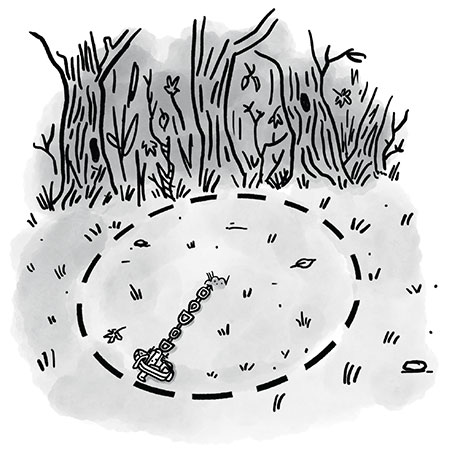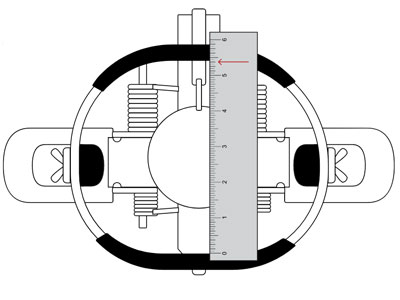Home → Hunting & Trapping → Trapping → Laws & Rules → Trapping Regulations
Trapping Regulations

On this page:
- General Trapping Regulations
- Regulations for Specific Species
- Regulations for Specific Types of Traps
- Trap Tending Laws
General Trapping Regulations
Trapping During Closed Season: Except as explained in animal damage control laws, it is unlawful to trap for any species of wild bird, or any species of wild animal, which does not have an open trapping season.
Advance Preparation: No person shall stake, hook, fasten or position a trap at any trap site location in the fields, forests or waters of the State prior to the opening day of the trapping season. In addition, there shall be no installation or placement of trapping implements, associated materials, or supplies or preparation of the site in the water or on the ice including the associated flowage, marsh, bog, brook, stream, river, pond, or lake prior to the beginning of the trapping season on beaver and muskrat.
Removing Animals from Traps: Any animal found in a trap must be removed. If the animal is alive and it is a legal species, it may either be released or humanely dispatched. It is unlawful to keep a trapped animal alive without a permit to possess captive wildlife. (Contact the Department for more information about captive wildlife.)
Capture of Non-target Species: Any animal caught during a closed season for that species, must be released alive immediately; lynx and eagle are the exception, see the following protocol. In the unlikely event that an eagle or lynx is caught in a trap, a biologist or game warden must be notified immediately, before the animal is released. See What to do if I Catch a Lynx. If a non-target species that cannot be lawfully possessed is found dead in the trap, it must be reported to a game warden as soon as possible and before the animal is removed from the trap. The animal must be surrendered to a game warden or biologist within 48 hours from the time it was discovered.
Carrying a Firearm: Any licensed trapper is allowed to carry a firearm at any time while tending traps (including nights and Sundays) for the sole purpose of dispatching trapped animals. However, any person prohibited from possessing a firearm under the Maine Revised Statutes, Title 15, Section 393 is prohibited from carrying a firearm during the open trapping season for the purpose of dispatching animals unless they have obtained a valid permit to carry a firearm.
Disturbing Traps: It is unlawful to take or disturb any trap, or any wild animal which is caught in a trap, without permission from the owner of the trap. An individual convicted of disturbing traps, will lose any license in effect, and be ineligible to purchase any license issued by the Department for 3 years.
Furbearer Hunting: The use of a firearm, crossbow, or bow and arrow is permitted to hunt for bobcat, coyote, red and grey fox, opossum, raccoon, red squirrel and skunk during the open hunting season on these animals. See the Maine Summary of Hunting Laws for more information. It is unlawful to hunt for beaver, fisher, marten, mink, muskrat, otter, or weasel at any time.
Setback Distance: Traps are required to be set at least 5 feet away from another person's beaver traps; however, as a matter of common courtesy, traps should be set a reasonable distance away from any trap which has been set by someone else. See regulations related to setback distances from beaver houses, beaver dams, and muskrat houses.
Trapping Within the Built-up Portion of a Town: Trapping is only permitted within ½ of the built-up portion of a city or town with the use of cage-type live traps and drowning sets, unless trapping on property owned by the trapper.
Marking Beaver Traps
The law requires that each trap is labeled with trapper's full name and address or MOSES ID. However, most trappers label both their trap and the pole to which their trap is fastened. This eliminates the need for a warden to chop out or otherwise disturb the set in order to identify the trapper. It is a Depart ment policy that if the trapper's name and address or MOSES ID are displayed on the trap pole above the ice, the warden will not chop out the set to check the trap for a label.
Trap Identification: Each trap set must be clearly labeled with trapper's full name and address or MOSES ID. If two people are trapping together, it is not necessary to have the name and address or MOSES ID of both trappers on each trap. Note: The recommended method for labeling traps is to attach a small metal tag to each trap chain with a piece of wire. The tag should be preprinted with your name and address or MOSES ID.
Visible Bait: Foothold or killer-type traps must not be set within 50 yards of bait that is visible from above. Bait may be used for trapping if it is completely covered to prevent it from being seen from above, and it must be covered in such a way as to withstand wind action and other normal environmental conditions. Animal matter (e.g., feathers, bone, and fur) meet the definition of bait and visible attractor and must be covered or not visible from above if less than 50 yards from a foothold or killer-type trap.
Note: Visible attractors are not permitted during the early canid season.
Regulations for Specific Species
Early Fox and Coyote Trapping Season:
In addition to the general trapping rules, the following rules apply:
- Killer-type traps are not permitted.
- Traps in the water are not permitted.
- Exposed bait or visible attractors are not permitted.
Trappers are permitted to keep any incidental opossum, raccoon or skunk that are caught in fox and coyote traps. Any other furbearing animal caught incidentally in fox and coyote traps must be released alive immediately, except lynx (see What to do if I Catch a Lynx) or,if found dead, must be left in the trap and reported to a game warden as soon as possible.
Muskrat Trapping
Muskrats have traditionally been one of Maine’s most sought-after furbearers due to their relative abundance, ease of harvest, and historic value. Muskrats are a great species to target for new and experienced trappers, but trappers should make sure to carefully review all the muskrat-related regulations.
Early Muskrat Trapping Season
In addition to the general trapping rules, the following rules apply:
- Traps must be set at or below ground or water level.
Note: For enforcement purposes, traps will be considered set "at or below ground or water level" when set on objects which muskrats frequently visit, such as floating logs, logs extending from the water onto the bank and tree stumps located in or near the water. - The only traps allowed are foothold traps that shall be limited to an inside jaw spread between 3 11/16 inches and 5 3/8 inches, killer-type traps with a jaw spread of not more than 5 inches, and colony traps (see foothold measurement description and colony trap restrictions).
- The use of any exposed bait or visible attractors are not permitted. Note that fruits and vegetables used for muskrat trapping are not considered bait or visible attractor.
- Keeping incidental mink, otter, or raccoon caught in muskrat traps is permitted. Any other furbearing animal caught incidentally in a muskrat trap must be immediately released alive, or, if found dead, must be left there in the trap and be reported to a game warden as soon as possible.
Late Muskrat Trapping Season
After the close of the general trapping season, muskrats may still be trapped, but only in those areas that are open to beaver trapping.
After February 28, in those Wildlife Management Districts that remain open to beaver trapping, muskrat trapping is restricted to 1) killer-type traps, foothold traps, and colony traps, which must be set, placed, and tended to remain underwater; or 2) foothold traps on "covered floats." During late muskrat trapping season, only one trap may be placed per float; the trap must be recessed 3 inches or greater from any opening in the cover; the trap chain or wire must be at least 3 feet long; and the maximum foothold trap size for covered floats sets is No. 1 ½ or equivalent (maximum inside jaw spread no greater than 5 3/8inches).
Covered Float
A covered float is defined as a float completely covered on the sides and top with solid material; or hardware cloth, screen, or similar material, having a mesh size no greater than ½ inch square. A covered float must be set, placed, and tended so that it is completely surrounded by water and access to the float must be limited to openings at the extreme ends of the float and the openings must not exceed 7 inches in height or 14 inches in width. The use of exposed bait or visible attractor on covered floats is prohibited. Covered floats may be used during early muskrat, general, and late muskrat trapping season.
Beaver Trapping
- Traps set for beaver are restricted to killer-type traps and drowning sets.
- No person shall use meat or fish as bait while trapping for beaver.
- The setting of suitcase-type live traps during the beaver trapping season is prohibited except under the authorization of a Regional Wildlife Biologist or game warden as part of the Department's Animal Damage Control program.
- No person shall make advanced preparation on the trapping grounds for the taking of beaver or muskrat prior to the open season on these animals.
- Any otter, muskrat, or mink taken incidental to beaver trapping may be lawfully possessed.
Beaver Conflicts
Every effort shall be made to minimize the out-of-season removal of problem beaver. This shall be accomplished by: (1) maintaining in-season trapping opportunity in problem areas, and (2) restricting the removal of beaver by an agent of MDIFW, a landowner, or a person acting on behalf of the landowner who has prior approval from the Department. Except in emergency situations, no beaver will be removed within 30 days of the opening day of the beaver trapping season in that area. A list of locations where beaver have been removed within 30 days of the opening of the beaver trapping season will be maintained at regional offices. The above provisions will maintain a greater level of beaver trapping opportunity. A list of beaver conflict sites may be available for your area. Please contact your regional wildlife biologist if you are interested in the location of recent beaver removal sites or conflict sites.
Trapping near muskrat houses, beaver houses and beaver dams
It is illegal to destroy or damage a muskrat house or den, a beaver house or a beaver dam. You are not allowed to set a trap within 5 feet of a muskrat house, a muskrat den, or a beaver house, and you are not allowed to set a trap within 5 feet of an active beaver dam. A beaver dam is considered inactive if it is breached or is no longer being maintained by a beaver and shows no evidence of beaver activity.
The exceptions to this rule are that in WMDs 1-6, 8-11, 18 and 19, there is no required setback distance from an active beaver dam or beaver house.
For enforcement purposes, the Department uses the following definitions in deciding if a hole in the bank is part of a muskrat den or beaver house:
Muskrat Den: A muskrat den is any cavity which is capped by muskrats with vegetative matter, including but not limited to hollow stumps and bank cavities. Holes in the bank not capped with vegetative matter are not considered to be muskrat dens.
Beaver House: The term beaver house includes any cavity in the bank which is capped by beaver with mud and sticks. Holes in the bank not capped with mud and sticks are not considered to be beaver houses.
For dams, dens, and houses, all measurements should be made from the trap itself. Sticks and poles used to construct the set are not considered part of the trap. The setback distance shall be measured as follows:
- House: measured from where the nearest edge of the house meets water or ice. In the case of a capped cavity on the bank, distance will be measured from where the nearest intersection edge of the cap meets the ground, water, or ice.
- Dens: measured from the nearest opening.
- Dams: beaver dams should be measured from where the nearest edge of the dam meets ground, water, or ice.
Incidental Catch of Mink and Otter
Although it is not permitted to trap for mink or otter after the general trapping season closes, trappers may keep mink or otter if caught by accident during the beaver trapping season.
Any otter caught from January 1 through April 30 must be registered with the Department within 10 days of harvest.
Bag Limits for Fisher and Marten
Trappers are not allowed to take or possess more than 25 marten or 25 fisher during the trapping season.
Regulations for Specific Types of Traps
Foothold traps
The statewide foothold trapping regulations are as follows:
- Foothold traps must not be set above snow or ground level.
- It is unlawful to use a trap with teeth on the jaws unless when set, placed, and tended, the trap is completely covered with water.
- All foothold traps set on dry land must have at least three swiveling points and the chain must be centrally mounted at the base of the trap. One swiveling point must be at the base of the trap, one midway in the chain, and one at the trap's anchoring point.
3 Swivel Points
- Centrally Mounted at the Base of the Trap
Think of this as the central third of the base of the trap anywhere within the circle. This can be a J-hook coming directly from the base of the trap or a swivel attached to the trap with D-ring, lap link or link of chain. - Midway-in the Chain
This is halfway between the base of the trap and the anchoring point. A double swivel (which technically has two swiveling points) is commonly used here, but another swiveling point is still required at the anchoring point and at the base of the trap. - The Anchoring Point
This is where the trap chain attaches to your anchoring device. An anchoring device may be a rebar stake, disposable or cable stake, or a drag. When using a drag, the anchoring point can be considered where the chain associated with the drag attaches to the trap chain. Remember that the use of drags is prohibited in WMD's 1-11, 14, 18 and 19.

The foothold trapping regulations for WMDs 1-11, 14, 18, and 19 are as follows:
- Foothold traps must be securely anchored to the ground. The use of drags is prohibited in these WMDs.
- Foothold traps must have the catch circle cleared of woody vegetation, debris and manmade material that could cause entanglement of a trapped animal. Small sticks and rocks, and rotten/decaying woody material may be used for stepping guides, blocking, and backing for trap sets, if they are not rooted to the ground. A catch circle is defined as the area that can be circumscribed by the outer edge of a trap when the trap and trap chain are fully extended and moved in a circle (360°) around the anchoring point.
- These restrictions do not apply to foothold traps that when set, placed, and tended are fully or partially covered by water, those that are set on a muskrat "float", or dog-proof raccoon traps.
In WMDs 1-6 and 8-11 no foothold trap may be used that has an inside jaw spread of more than 5 3/8 inches unless when set, placed, and tended the trap is fully or partially covered by water.
The Catch Circle
The catch circle is defined as the area that can be circumscribed by the outer edge of a trap when the trap and trap chain are fully extended and moved in a circle (360°) around the anchoring point. In WMD 1-11, 14, 18 and 19 the catch circle must be clear of material that could cause entanglement.

Foothold Jaw Spread
Measure inside spread of jaw at the dog of the trap to ensure jaw spread is no more than 5 3/8 inches.

Enclosed Foothold Traps
Enclosed foothold traps that are designed primarily to catch raccoons and avoid incidental catches of other animals may be used throughout the general trapping season.
Cage-type Live Traps
Cage-type live traps may be used to trap for bear and furbearing animals. In WMDs 1-6 and 8-11, cage traps must have an opening of no more than 13" in width and 13" in height, unless the cage trap is being used for (1) wildlife research and survey activities; (2) removal of animals causing damage to property; or (3) to capture a bear. Culvert traps are a type of cage-type live trap.
Cable Devices
- Bear: Cable traps designed to capture and hold the animal by the foot are permitted for black bears. See Bear Trapping for more information.
- Beaver: Cable devices may be used to trap beaver, but they must be set completely underwater and be set in a way to ensure drowning.
Colony Traps
Colony traps may be used (primarily for muskrat) throughout the trapping season, except that:
- The outside dimensions of colony traps may not exceed 7 inches high by 7 inches wide by 40 inches long, and
- All colony traps must be set, placed, and tended so as to remain completely under water.
- For tending purposes, colony traps are considered killer-type traps.
Killer-type (Conibear) Traps
For information and rules on killer-type (conibear) traps, see Killer-Type (Conibear) Trap Rules.
Wooden-Based Rat Traps
Wooden-based rat traps may be set on land for weasel and red squirrel trapping if recessed in a wooden box with a hole no larger than 2 inches in diameter.
Trap Tending Laws
- Killer-type Traps or Drowning Sets:
- Organized Town:
- Within ½ mile built up portion of town (See definition of "built up portion of town"):
→ Tended at least once every calendar day - Beyond ½ mile built up portion of town:
→ Tended at least once every 3 calendar days
- Within ½ mile built up portion of town (See definition of "built up portion of town"):
- Unorganized Town:
→ Tended at least once every 5 calendar days
- Organized Town:
- Under-Ice Drowning Sets
- For enforcement and information purposes, all drowning sets for beaver and muskrat during January and February will be considered "under-ice drowning sets". During November, December, March and April if a drowning set is under the ice, there will be no tending requirement.
→ No tending requirements
- For enforcement and information purposes, all drowning sets for beaver and muskrat during January and February will be considered "under-ice drowning sets". During November, December, March and April if a drowning set is under the ice, there will be no tending requirement.
- Restraining Devices
- A restraining device is a trap set on land to hold a live animal, which includes a foothold trap, enclosed foothold trap, cage-type live trap, and cable device.
→ Tended at least once every calendar day
- A restraining device is a trap set on land to hold a live animal, which includes a foothold trap, enclosed foothold trap, cage-type live trap, and cable device.
Traps must be physically tended and adjusted as necessary to remain legal. That means traps must be adjusted to reflect changing water levels when set, placed, and tended. Electronic trap notification devices cannot be used in lieu of physical checks.